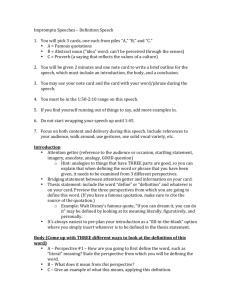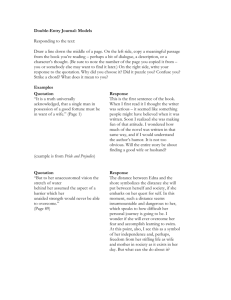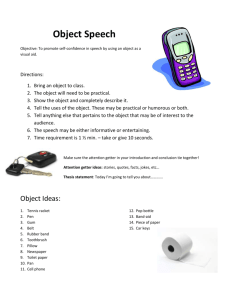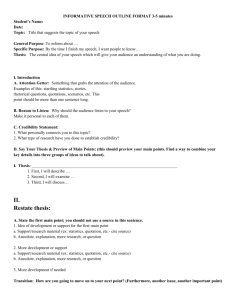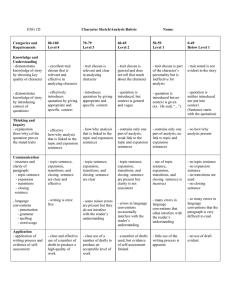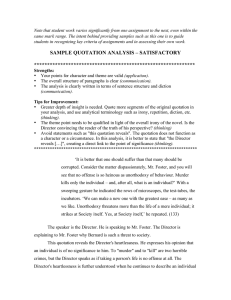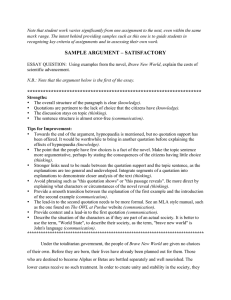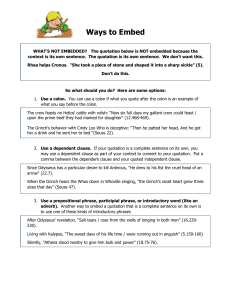Speech structure
advertisement
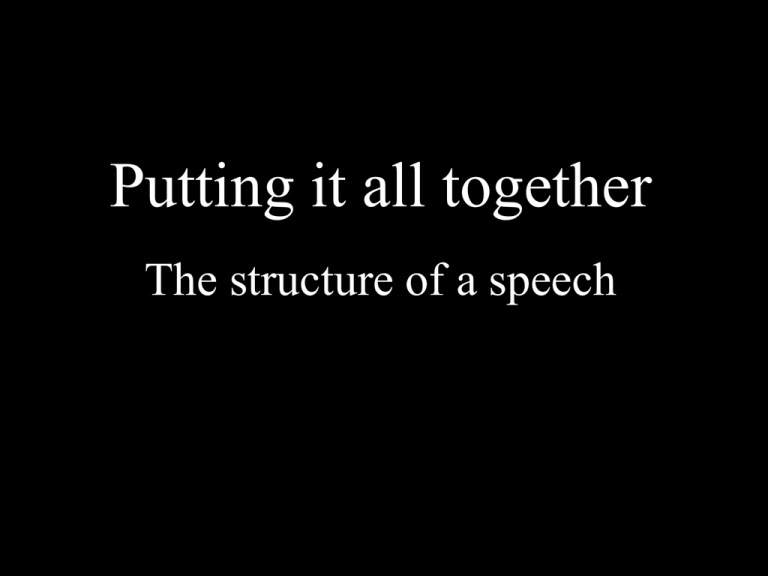
Putting it all together The structure of a speech Outlines Three components • Introduction • Body • Conclusion I. Introduction A. Attention Getter B. Main ideas 1. Idea 1 2. Idea 2 3. Idea 3 II. Body A. Idea 1 1. Support 1 2. Support 2 3. Support 3 B. Idea 2 1. Support 1 2. Support 2 3. Support 3 C. Idea 3 1. Support 1 2. Support 2 3. Support 3 III.Conclusion A. Restatement of Main Ideas 1. Idea 1 2. Idea 2 3. Idea 3 B. Closing Statement The Body of your Speech Logical order support Arrangement • From simple to complex • From cause to effect • From problem to solution • According to space • According to time Introduction: Divulge the purpose and reasons for your talk Gain audience goodwill Arouse audience interest • Attention Getter • Main Ideas Attention Getter 1. Reference to the occasion and sponsor 2. Reference to the audience 3. Reference to the speaker 4. Reference to literature 5. Questions to the audience 6. Quotation and question 7. Anecdote 8. Quotation 9. Startling Statement 10. Statistics Conclusion Should not drag on Should not contain new material • Restatement of Main Ideas • Closing Statement Ideas to incorporate in your conclusion 1. A summary of key ideas 2. A prediction 3. A quotation, either emotional or factual 4. A quotation from literature 5. A quotation from an authority 6. An anecdote or question, or both Transitions or Connecting Links • Connect the introduction to the body and the body to the conclusion • Show the relationship between ideas • Place: adjacent to, on the opposite side of, diagonally, across • Time: after a few hours, meanwhile, in the meantime, afterward, immediately, earlier, next, then, later • Purpose: for this reason, to this end, with this goal • Concession: of course, to be sure, naturally • Comparison and contrast: on the other hand, nevertheless, on the contrary, in contrast, in the same way, conversely, however, in like manner, similarly, whereas • Summary of repetition: in other words, to review briefly, in short, on the whole, to sum up, as previously noted, here again, in summary, in brief, if I may repeat • Explanation: for example, in particular, more specifically • Addition: furthermore, in the second place, besides, moreover, again, in addition, equally important, finally, also • Cause or result: on that account, therefore, as a result, thereupon, for this reason, consequently, accordingly, under these conditions, hence • Conditions: Although, because, even though, since, if, unless, under these conditions, nevertheless, otherwise, this being so Transitions help “telegraph” to your audience that: 1. The introduction is over, and you are swinging into the body 2. The body is over, you are moving into the conclusion 3. The conclusion is almost over, and you are ready to answer questions or to sit down The keys to a great speech are organization and practice!!!



